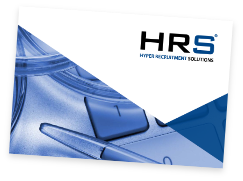What is Validation?
Validation is the process of outlining and curating documents that demonstrate and prove that a procedure, process or activity has been carried out to the desired level of compliance in line with regulatory standards (GMP, GDP, GCP etc.)
Essentially, validation ensures that products and equipment are produced in a consistent, controlled and safe manner.
And, as you can imagine, there are many procedures, processes and activities involved within a pharmaceutical company as they deal with medicines and drugs for the use of the general public. Ultimately, they have to ensure that these processes are safe for the consumer.
Types of Validation in Pharmaceuticals
Analytical Method Validation
In pharma, analytical method validation confirms and provides evidence to prove that that the procedure chosen for a particular test is fit for the intended purpose and provides high quality, reliable and consistent results. So much so, that the same method used in any other laboratory across the world should be able to replicate the results under the same conditions and parameters.
Factors that are considered during the analytical validation process include the accuracy, precision, reproducibility, and repeatability of the method.
Cleaning Validation
Cleaning validation is very much what it says on the tin! The process of cleaning validation in pharma ensures that a system or piece of equipment is cleaned to the highest standard. This is to ensure that there are no contaminants, which could include residues, microbes, and other airborne materials. The main purpose of cleaning validation is to prevent contamination and cross contamination which could heavily affect the results or integrity of any test or product within the lab.
Process Validation
Process validation ensures and proves the integrity and effectiveness of the design and manufacturing process of a product. This is done through four stages of process validation:
Prospective validation is carried out during the development stage of a product. At this point in the product manufacturing process, the steps of production will be split into distinct sections, allowing for the analysis of potential critical points.
Concurrent validation involves extremely close monitoring of the product during the manufacturing steps and the pre-identified critical points. At this point, there will be lots of in-process testing which involves the testing of weight, viscosity, density, clarity, and the pH value of the product.
Retrospective validation involves checking a system that has been in operation for some time to ensure that it is still complying with the set standards and regulations.
Revalidation is the final part of process validation, and this offers the opportunity to check whether a system is operating after a substantial change of circumstances. For instance, this could include: a change in raw material that makes up the product, a change in equipment, a change within the production facility or an increase or decrease in the yield of the product.
Equipment Validation
Equipment validation ensures that all instruments used within the production process operate for their intended uses. There are three sub-steps within equipment validation which ensure that all equipment is installed correctly, operates correctly, and produces and performs for its intended purpose correctly. For example, Computer System Validation (CSV) would fall under the equipment validation umbrella.
